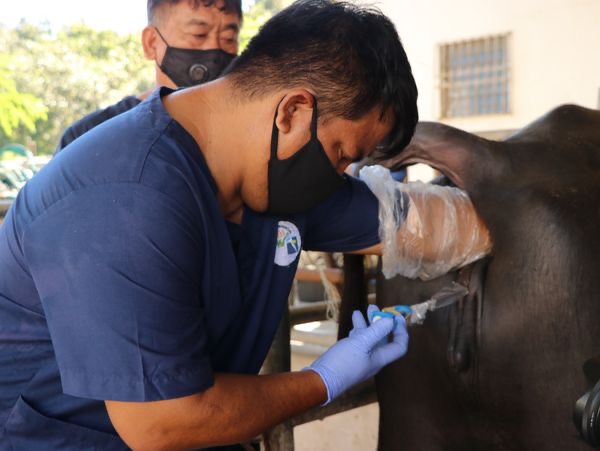Population of dairy carabaos increased in Region 2 due to crossbreeding program—DA
By Jel Santos

The government's crossbreeding program had “significantly” increased the number of dairy carabaos in Region 2, the Department of Agriculture (DA) said.
San Agustin, a municipality in the Isabela province, is unique as the "Crossbred Carabao Capital of the Philippines" because of its outstanding successes in carabao crossbreeding, the DA said.
“The municipality actively collaborates with the Department of Agriculture-Philippine Carabao Center (DA-PCC) to train Village-Based Artificial Insemination (AI) Technicians (VBAITs), aiming to increase the population of crossbred carabaos,” the agency stated.
According to the agriculture department, this program has shown outstanding results, with San Agustin's municipal agriculture office reporting 2,854 crossbred carabaos in June 2023.
The DA has attributed the success in San Agustin to the local government's commitment to harnessing AI for breed improvement.
Meanwhile, the DA said its initiatives such as the Carabao-based Business Improvement Network (CBIN) project and the DA-PCC's Carabao upgrading program are also expanding the carabao population in neighboring Quirino and Nueva Vizcaya through processing and marketing facilities.
The DA stated that the Philippine Dairy Carabao is the result of a continuous backcrossing method carried out by researchers at the DA-PCC at the University of the Philippines Los Baños (DA-PCC at UPLB) under the supervision of Dr. Ester Flores, National Genetic Improvement Program Coordinator, and DA-PCC geneticist.
“This breeding approach involves mating purebred riverine buffaloes with native swamp buffaloes (carabaos). The resulting offspring—crossbred carabaos—are bigger, meatier, and produce more milk than native carabaos, which can only provide an average of one to two liters of milk a day,” the agency said.
“The development of the Philippine Dairy Carabaos did not stop at the production of the first cross— the 50:50 bloodline. Subsequent generations of purebred riverine bulls that are the product of careful selection and mating are used for continuous mating (backcrossing) of the subsequent generations of crossbred cows with increasing riverine bloodline until the fourth generation,” it added.
Currently, crossbreds are identical to purebred riverine animals, but they have the clear advantage of being more tolerant of or adaptable to the environment in the Philippines, the agriculture department noted.
“These bulls [entrusted to farmers] are products of continuous backcrossing and selection of cows that are really good milk producers. Their daughters will be included in the genetic evaluation, the process that purebred cows undergo, having their own estimated breeding values,” said Dr. Flores.
“With all the rigorous processes done to come up with these bulls, they are ready to be used for breeding.”